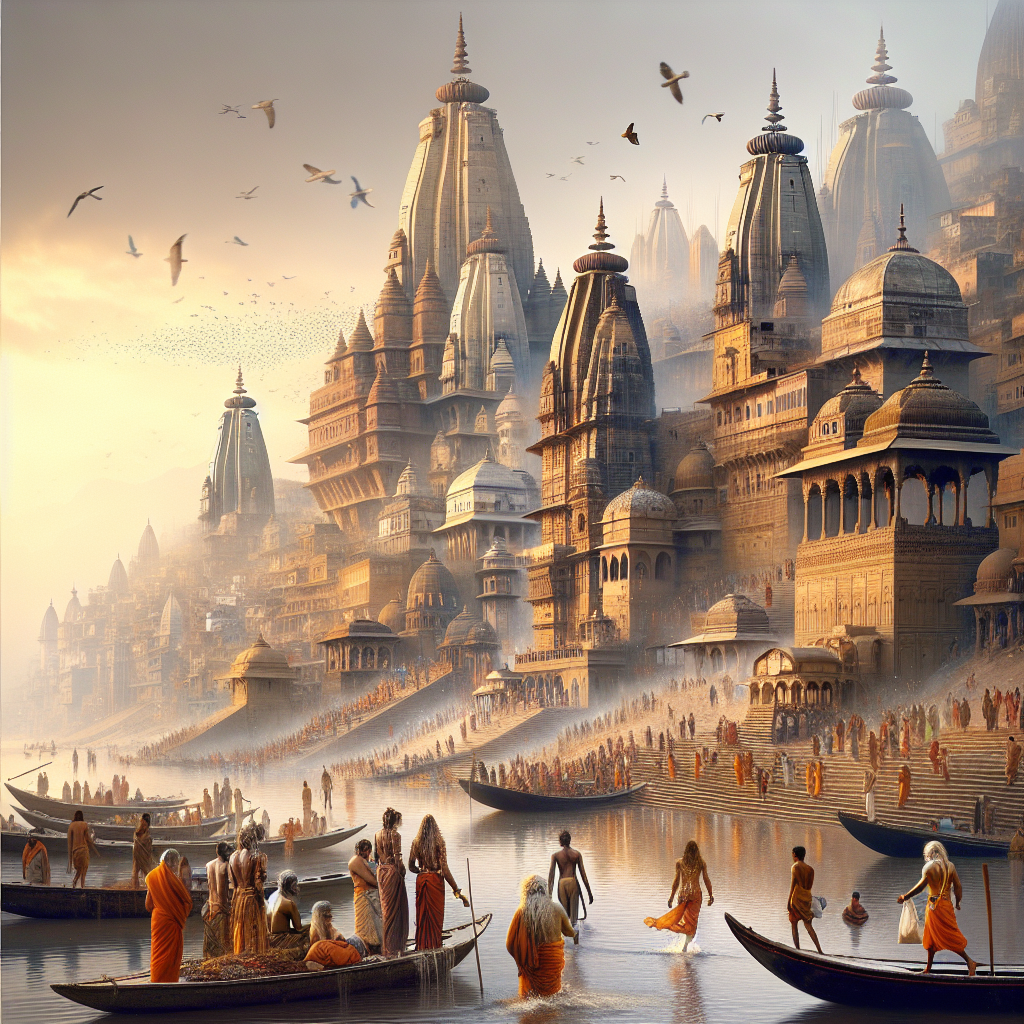[ad_1]
From Varanasi to Prayagraj: Exploring the Historical Sites of Mahakumbh 2025
The Mahakumbh, one of the largest religious gatherings in the world, is set to take place in 2025, attracting millions of pilgrims and tourists to India. This extraordinary event, which occurs every 12 years at the confluence of the Ganges, Yamuna, and the mythical Saraswati rivers in Prayagraj, is an amalgamation of spirituality, culture, and tradition. Varanasi, one of the oldest continuously inhabited cities in the world, serves as a perfect starting point for exploring the rich historical and spiritual tapestry surrounding Mahakumbh.
The Historical Significance of Varanasi
Varanasi, often referred to as Kashi, is revered as a city of enlightenment and liberation. The Ganges River flows through its heart, and, for Hindus, a dip in its sacred waters can cleanse the soul and ensure moksha, or liberation from the cycle of life and death. Historically, Varanasi has been a center of learning and culture, associated with various dynasties and philosophies over the centuries.
Key Sites to Explore in Varanasi:
-
Kashi Vishwanath Temple: This iconic temple is dedicated to Lord Shiva and is one of the twelve Jyotirlingas in India. Pilgrims come from far and wide to offer their prayers and seek blessings here.
-
Dashashwamedh Ghat: Known for its mesmerizing Ganga Aarti, this ghat is the most famous of Varanasi’s riverfronts. As the sun sets, thousands gather to witness the spiritual ceremony, filled with music, chanting, and the glow of oil lamps.
-
Sarnath: Just a short distance from Varanasi, Sarnath is the site where Lord Buddha delivered his first sermon after attaining enlightenment. The Dhamek Stupa and the Ashoka Pillar are must-visit historical attractions.
-
Bharat Mata Mandir: A unique temple devoted to Mother India, featuring a marble map of India, this site symbolizes the unity and diversity of the nation.
- Manikarnika Ghat: Known as the primary cremation ghat, Manikarnika is a solemn reminder of the cycle of life and death and the Hindu belief in cremation. It is a place where many believe the soul achieves liberation.
Journey to Prayagraj
The distance from Varanasi to Prayagraj is approximately 120 kilometers, easily covered by road or rail. The route itself is rich with history and cultural significance, with numerous small towns and villages that have their narratives intertwined with India’s spiritual heritage.
The Mahakumbh in Prayagraj
As the site of the Mahakumbh, Prayagraj is steeped in legends and mythological importance. According to Hindu mythology, the Kumbh Mela celebrates the battle between the gods and demons for the nectar of immortality (amrit) that spilled at this confluence. This event transcends cultural boundaries, drawing people from various religious backgrounds to participate in the spiritual rejuvenation that the festival promises.
Key Sites to Explore in Prayagraj:
-
Triveni Sangam: The confluence of the three rivers—Ganges, Yamuna, and Saraswati—Triveni Sangam is the heart of the Kumbh celebrations. Pilgrims flock here to bathe in the sacred waters, believed to wash away sins and grant spiritual merit.
-
Kumbh Mela Grounds: The extensive fairgrounds transform into a bustling city of tents, stalls, and ashrams during the Mahakumbh, offering a unique glimpse into the diverse spiritual practices of India, from sadhus (holy men) to yogis and seekers.
-
Anand Bhawan: The ancestral home of the Nehru-Gandhi family, this historic site is a museum showcasing India’s independence movement’s artifacts. A visit here enriches your understanding of the region’s modern history.
-
Allahabad Fort: Built by Emperor Akbar in 1583, this magnificent fort is a fine example of Mughal architecture and is situated at the Triveni Sangam, making it an important historical and spiritual landmark.
- Patalpuri Temple: Located within the Allahabad Fort, this temple holds significant importance in Hindu mythology and is dedicated to Lord Vishnu, who is believed to reside in the netherworld.
Conclusion
As the countdown to Mahakumbh 2025 begins, the cities of Varanasi and Prayagraj stand as beacons of India’s rich spiritual heritage. The journey from the ancient alleys and ghats of Varanasi to the sacred confluence of Prayagraj encapsulates not just a pilgrimage, but a voyage through time, culture, and devotion. For those seeking to explore the historical sites surrounding this grand event, the experience promises to be a transformative journey across the realms of faith and tradition. Prepare to immerse yourself in the vibrant tapestry of life that these two iconic cities offer, as they beckon to pilgrims and explorers alike.
[ad_2]

